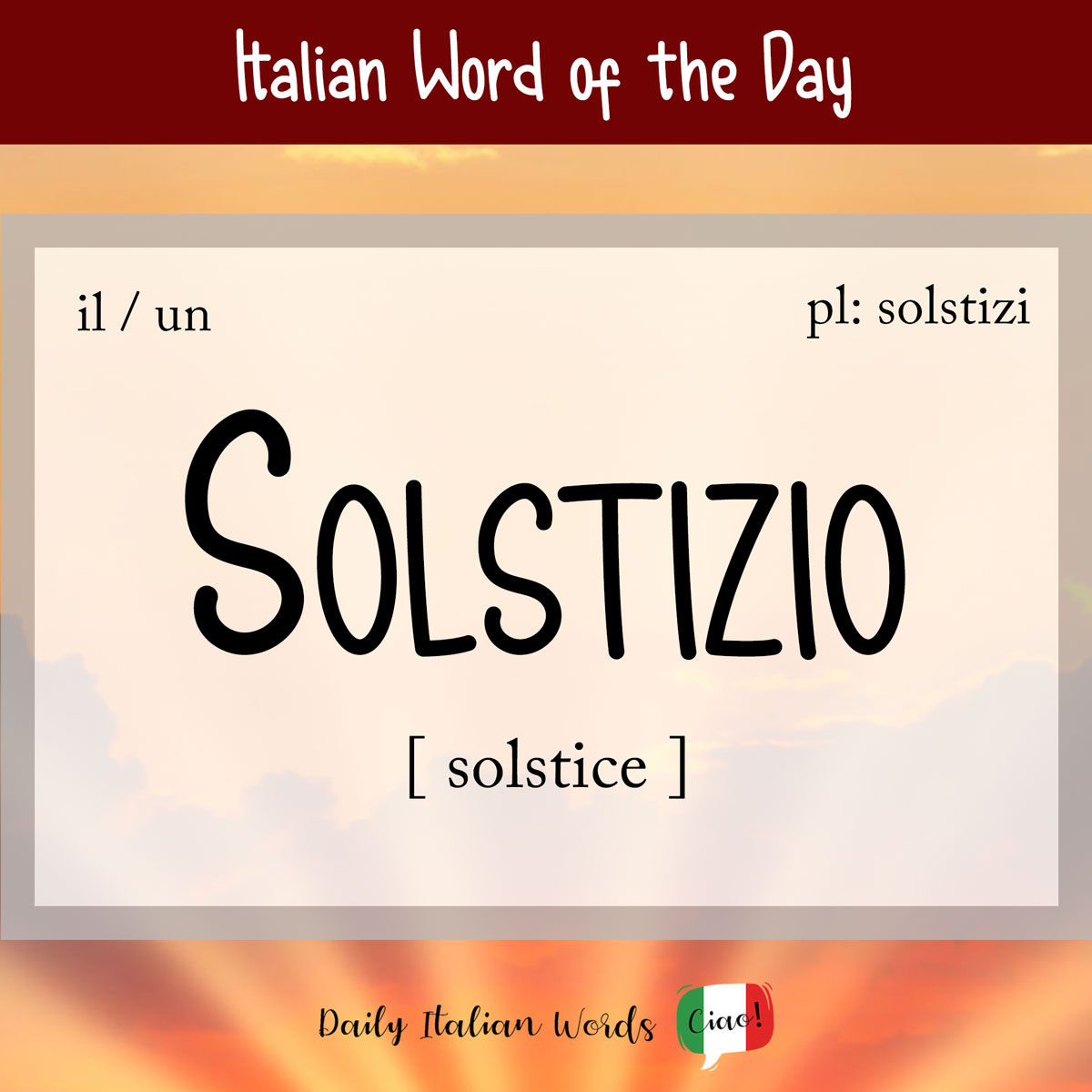The word for solstice in Italian is extremely similar to its English equivalent: solstizio.

It is a masculine noun, so it takes the following definite and indefinite articles:
- il solstizio = the solstice
- i solstizi = the solstices
- un solstizio = a solstice
- dei solstizi = (some) solstices
The word solstizio derives from the Latin solstitium, with sol meaning sole (sun) and sistere being the verb for fermare (to stop). This analogy stems from the fact that during the solstice, the sun appears to stop in its path along the sky.
The Winter Solstice – known as the solstizio d’inverno in Italian is the day with the shortest period of daylight and longest night of the year in the Northern hemisphere.
Officially marking the end of autumn (autunno) and the beginning of winter (inverno), it normally falls on either December 21st or 22nd. (In 2023, it takes place on the 22nd at 4:27 a.m. in Italy.)

Il 21 dicembre si verificherà il solstizio d’inverno.
The winter solstice will occur on December 21st.
In Roma, for example, the day will last 9 hours and 7 minutes whereas in Milano, the light will last 8 hours and 41 minutes.
After December 21st, the hours of light gradually increase again until the summer solstice (solstizio d’estate) arrives in six months’ time. This year, for example, the summer solstice will take place on June 21st at 10:57am in Italy and in Roma, the day will last 15 hours and 14 minutes.

Heather Broster is a graduate with honours in linguistics from the University of Western Ontario. She is an aspiring polyglot, proficient in English and Italian, as well as Japanese, Welsh, and French to varying degrees of fluency. Originally from Toronto, Heather has resided in various countries, notably Italy for a period of six years. Her primary focus lies in the fields of language acquisition, education, and bilingual instruction.


